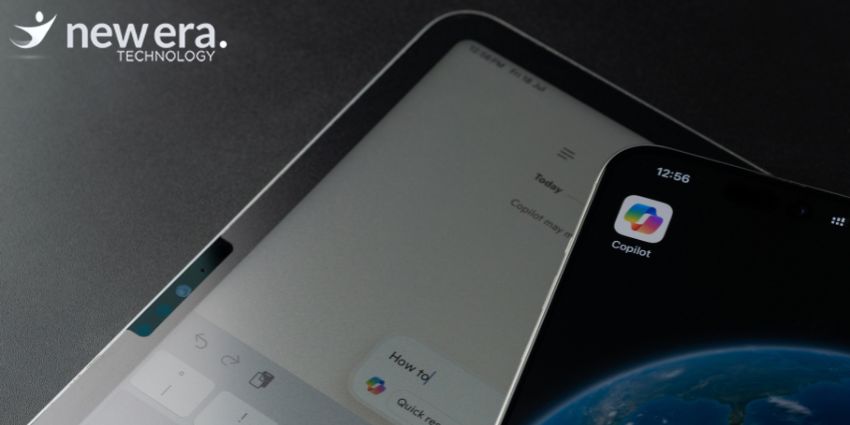Mobility, functionality, simplicity – surely three of the most essential components of an enterprise videoconferencing stack.
After all, virtual communication and collaboration is firmly established as a critical component of how the majority of the world now does its business.
Indeed, going forward, the evolution of AV is likely to continue to quietly enable yet more hybrid work efficiency and productivity gains as manufacturers push the set-up, configuration and ease-of-use envelopes.
Videobar devices in particular are those powerful, neat, all-in-one additions to the AV toolkit: a plug-and-play means of cost-effectively equipping rooms that don’t need extensive in-room solutions. Videobar technology ensures the conferencing and collaboration experience is on par with larger meeting spaces with high-quality audio and video capabilities — less the complexity of a fully integrated room system.
Here, Adam Shulman, product lead, installed systems business at leading global AV manufacturer Bose Professional, eyes the trends likely to be top-of-mind for organisations of all sizes in 2024 – and how its range of conferencing solutions can help maximise every opportunity to succeed and grow.
Flexibility
Since Covid, we saw how remote work skyrocketed with hybrid work evolving to become the norm. And, contrary to the initial concerns of some, productivity was not impacted, with many knowledge workers throughout the UK and the US reporting an increase in productivity as well a better work-life balance. This real-time pressure test opened up opportunities for organisations to adapt to the changing work environment and employees’ preferences, including those who want to return to the office part time. Regardless of a company’s in-office policies, the need for inter- and intra-company communication requires support from flexible and highly mobile videoconferencing solutions that take effective collaboration way beyond the traditional meeting room.
Organisations that embrace the hybrid working model will be able to reduce fixed overhead costs by leveraging more flexible, multi-purpose workspaces; and high-quality and feature-rich videoconferencing hardware will deliver increasingly rich user experiences. Think simple-to-use with plug-and-play interface and continued support around Bring Your Own Meeting (BYOM), enabling users to operate within a familiar digital environment (their own device) while taking advantage of audio and video capabilities superior to those of their laptop.
Expansion
Thanks to videoconferencing, the world has gotten smaller and, as a result, the barriers to global market expansion are much reduced. As regions around the globe adjust to and deal with new market challenges and uncertainties, the ability for businesses to collaborate easily and cost-effectively with potential new customers (once deemed too geographically distant) becomes even more necessary for success. Videoconferencing capabilities — and the realisation of a continued virtual presence — will help businesses penetrate markets outside of their region; developing opportunities in places where in-person engagement may not be as easy to support.
Artificial Intelligence
The media continues to cover the surge of public interest around AI and its adoption in the workspace, and this trend will continue as companies like Google, Apple and Microsoft refine and expand the use of AI in their products. AI can more rapidly provide deep insight into how companies are able to gain efficiencies in meeting rooms and how in-room videoconferencing technology is deployed and used. These insights will propel organisations of all sizes toward continuous improvement in meeting equity, taking advantage of AI-powered capabilities like automatically generated subtitles and multi-language meeting transcripts. It will be exciting to see how the use of AI will continue to improve the user experience, automating and accelerating formerly manual and effort-intensive tasks.
Asynchronous Collaboration
While the virtual walls of the work environment have moved, times zones are here to stay — and remain one limitation that organisations doing business in multiple locales need to deal with. If you limit business to what can be accomplished when everyone is “in the office”, it may not leave a lot of time during the collective workday. Asynchronous work becomes a great complement to videoconferencing, nurturing asynchronous collaboration across teams no matter where they may be participating. Work can be done individually and shared during times when everyone is available, effectively expanding a global company’s operating window to 24 hours a day. How this approach to work evolves globally will be another interesting aspect of the ever-changing workplace.
Workforce Wellbeing
Hybrid work will continue to help everyone strike an all-important work-life balance that simultaneously delivers employer return on investment and employee wellbeing. Indeed, of all the recent technological advancements, it is surely videoconferencing that has played the biggest part in the recent evolution of how the world does business. It’s helped remove location hurdles and enabled us to build relationships across distances with people we may never meet in person. Consequently, it’s in the best interest of businesses to continue to provide their workforces with high-quality, super-simple videoconferencing tools that make connecting with others across (even great) distances easy, productive and satisfying.
To learn more about how Bose Professional can help your and your customers’ businesses maximize the power of videoconferencing, click here.







